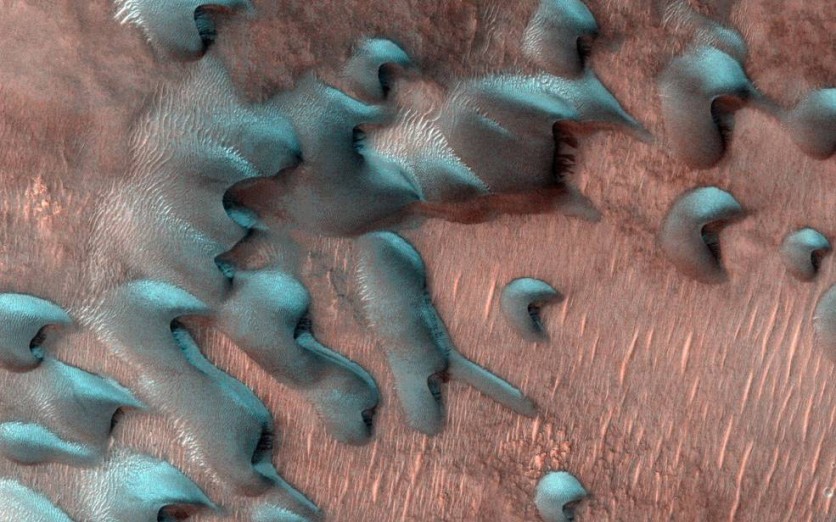Is there life on Mars? We do not know for now, but we are certain that there is a snowy wonderland on the Red Planet!
When winter arrives on Mars, the planet's surface becomes an extraterrestrial holiday setting. Low temperatures are accompanied by snow, ice, and frost during this time of year.

Martian Poles
According to NASA, Mars' poles are where some of the coldest snow occur. where temperatures can drop to minus 190 degrees (minus 123 degrees Celsius).
However, no place on Mars receives more than a few feet of snow, and most of it falls across flat terrain.
Winter arrives on Mars much later than it does on Earth because of the Red Planet's eccentric orbit, which makes one Mars year roughly equal to two Earth years.
But with NASA's robotic Mars explorers, scientists were given an opportunity to investigate the planet's distinctive winter occurrences.
According to NASA, there are two types of snow on Mars: water ice and carbon dioxide, sometimes known as dry ice.
Water-ice snow sublimates or turns into a gas before it even reaches the ground on Mars because the atmosphere there is so thin and the temperatures are so low. Snow made of dry ice does also fall on the ground.
Read Also : Liquid Water on Mars? Scientists Reveal New Study Which May Prove This Claim About the Red Planet
Cloudy Snow
NASA notes that snow only falls on Mars' coldest terrain, at the poles, when there is cloud cover, and at night.
Because of these clouds, cameras on orbiting spacecraft can't see through them, and surface missions can't endure the cold. Hence, there are no pictures of snow falling on Mars. But because of a few specialized scientific tools, scientists are aware that it occurs.
The Mars Climate Sounder instrument on NASA's Mars Reconnaissance Orbiter can see through cloud cover because it can detect light at wavelengths that are invisible to the human eye.
Scientists have been able to see carbon dioxide snow descending to the earth thanks to that ability. In 2008, NASA launched the Phoenix lander to a distance of just 1,600 kilometers (or roughly 1,000 miles) from Mars' north pole, where a laser instrument was used to find snow made of water ice that had fallen to the surface.
On Mars, water and carbon dioxide may both produce frost, and both types of frost are much more prevalent than snow throughout the planet.
When studying Mars in the 1970s, the Viking landers discovered water frost, and NASA's Odyssey spacecraft has also seen frost form and melt away in the morning Sun.
NASA said that the most amazing discovery is likely to occur at the end of winter when all of the accumulated ice starts to thaw and sublimate into the atmosphere.
This ice then transforms into strangely attractive formations that have been compared to spiders, fried eggs, and Swiss cheese, and many more.
Related Article : NASA's James Webb Space Telescope Zooms in on Mars for the First Time, Capturing Stiking Martian Details!

ⓒ 2025 TECHTIMES.com All rights reserved. Do not reproduce without permission.




